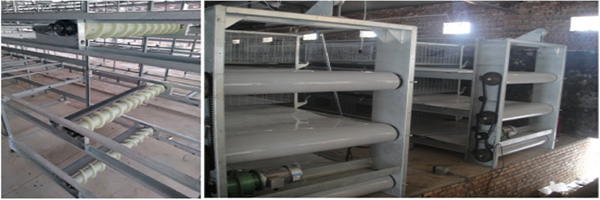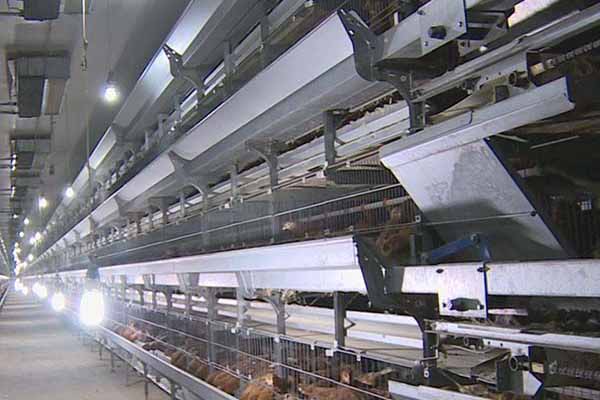Optimizing Chicken Farming in Uganda with Advanced Equipment Data Management Systems
Time : 2025-06-29
Introduction

The poultry industry in Uganda has been experiencing significant growth over the years. With the increasing demand for chicken meat and eggs, modern farming techniques and technology have become essential tools for enhancing productivity and efficiency. One such technology is the use of a data management system for chicken equipment. This article explores the benefits of implementing a data management system for chicken equipment in Uganda, focusing on the specific requirements and considerations for the industry.
Understanding the Ugandan Chicken Industry
Uganda, located in East Africa, has a vast agricultural sector that contributes significantly to the national economy. The country has favorable climate conditions, abundant water resources, and fertile soil, making it suitable for poultry farming. However, the industry faces several challenges, such as disease outbreaks, inefficient feed utilization, and low productivity. Implementing advanced chicken equipment data management systems can help overcome these challenges and enhance the overall performance of the industry.
Key Components of a Data Management System for Chicken Equipment

A data management system for chicken equipment typically consists of several key components, including:
- Equipment Tracking: This involves monitoring and tracking the usage, maintenance, and performance of chicken farming equipment such as feeders, waterers, incubators, and lighting systems. Real-time data allows farmers to identify potential issues and address them promptly.
- Feed Management: The system helps farmers manage feed inventory, optimize feed allocation, and track feed consumption. This ensures that chickens receive a balanced diet, resulting in better growth rates and health.
- Environmental Control: The system monitors temperature, humidity, and other environmental factors, ensuring that chickens live in a comfortable environment. This contributes to their overall well-being and productivity.
- Health Monitoring: The system tracks chicken health data, including vaccination schedules, medication administration, and disease outbreaks. This enables farmers to take proactive measures in disease prevention and control.
Benefits of Implementing a Data Management System for Chicken Equipment
Implementing a data management system for chicken equipment in Uganda can bring several benefits, including:
- Improved Productivity: Real-time data allows farmers to identify inefficiencies and implement best practices, leading to improved productivity and reduced costs.
- Enhanced Disease Control: By tracking health data, farmers can identify potential disease outbreaks early and implement appropriate control measures, minimizing the impact on their flock.
- Increased Revenue: Better management of resources and reduced costs contribute to increased profitability for chicken farmers.
- Environmental Sustainability: Efficient resource utilization and reduced waste contribute to a more sustainable poultry farming practice.
Challenges and Considerations
While data management systems offer numerous benefits, there are some challenges and considerations to keep in mind when implementing such systems in the Ugandan chicken industry:
- Infrastructure: Access to reliable internet and electricity is crucial for the effective operation of data management systems. This may be a challenge in some rural areas.
- Training and Education: Farmers need to be trained on how to use the system and interpret the data effectively. This may require additional resources and time.
- Data Security: Ensuring the security and confidentiality of data is essential, especially when dealing with sensitive information such as health records.
Best Practices for Implementing a Data Management System
To ensure the successful implementation of a data management system for chicken equipment in Uganda, farmers and stakeholders should consider the following best practices:
- Start with a pilot project: Begin with a small-scale implementation to identify potential issues and improve the system before scaling up.
- Incorporate feedback: Regularly gather feedback from users and make necessary adjustments to improve the system’s usability and effectiveness.
- Invest in training: Provide comprehensive training to farmers and staff to ensure they understand how to use the system and interpret the data.
- Seek expert advice: Consult with poultry industry experts and technology providers to ensure the system meets the specific needs of the Ugandan chicken industry.
Conclusion
Implementing a data management system for chicken equipment can significantly enhance the performance of the Ugandan poultry industry. By improving productivity, enhancing disease control, and increasing revenue, these systems can help farmers and stakeholders achieve sustainable growth. Despite the challenges, with proper planning, training, an d infrastructure development, the benefits of data management systems in the Ugandan chicken industry are substantial.
d infrastructure development, the benefits of data management systems in the Ugandan chicken industry are substantial.











